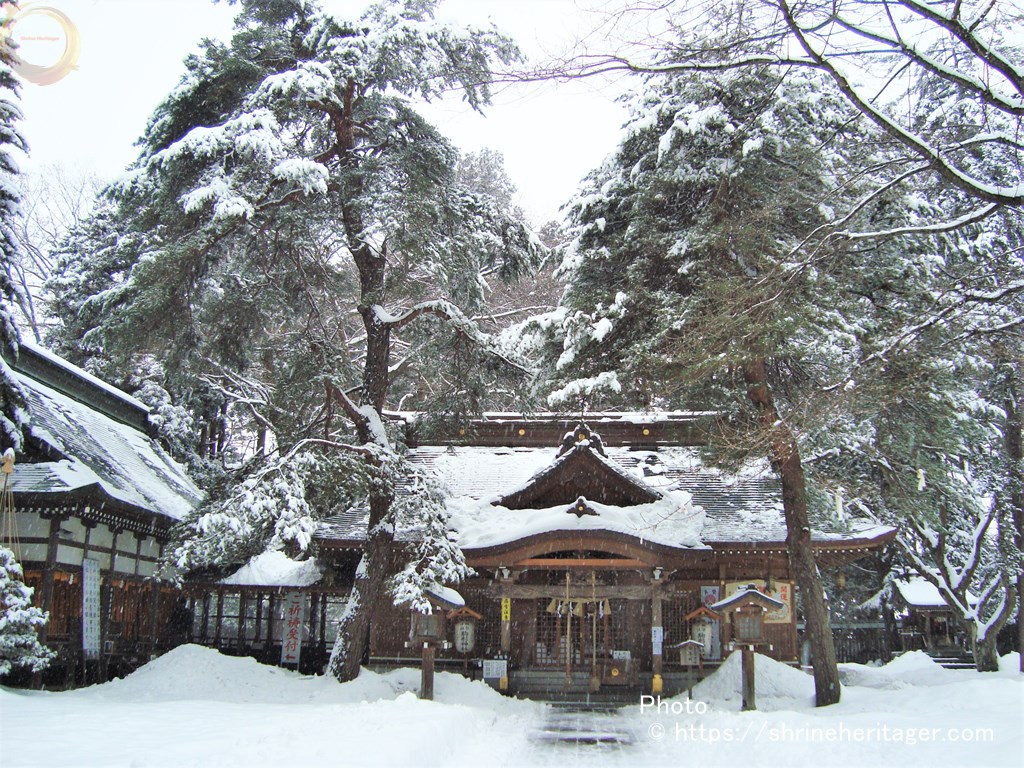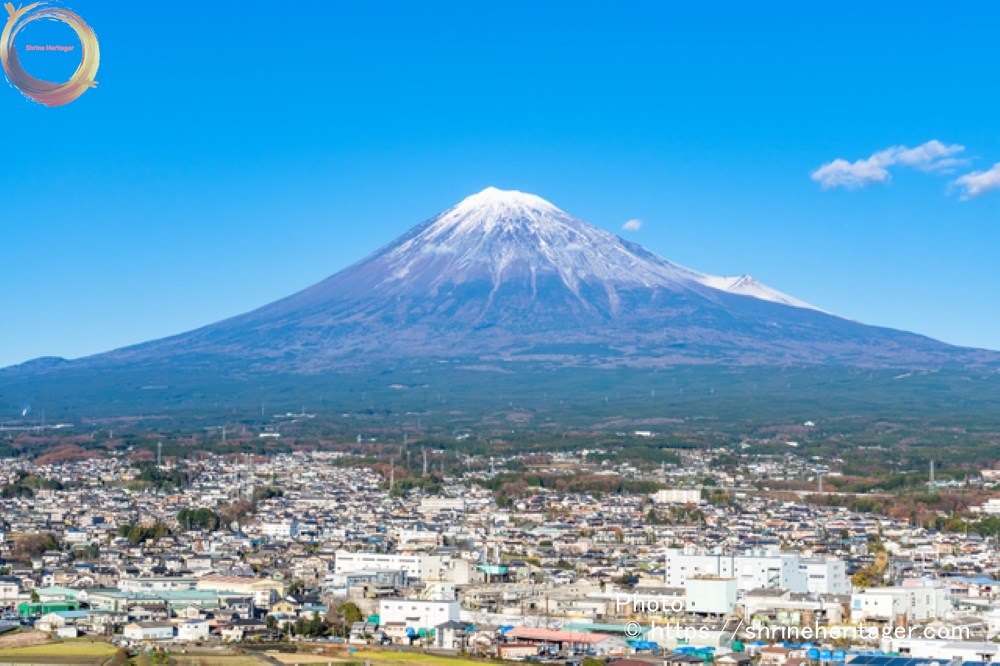Komagata Shrine Headquarters is called "Riku Chugoku Ichinomiya", and "Okumiya" is settled on the summit of Komagatake Mountains. In ancient times, it was thought that the area around the area was a production area for war horses. It is also said that in accordance with the Shinto Buddhist study with the horse head Kannon and Dainichi Nyorai, they are solicited and widely worshiped in various parts of Eastern Japan.
目次
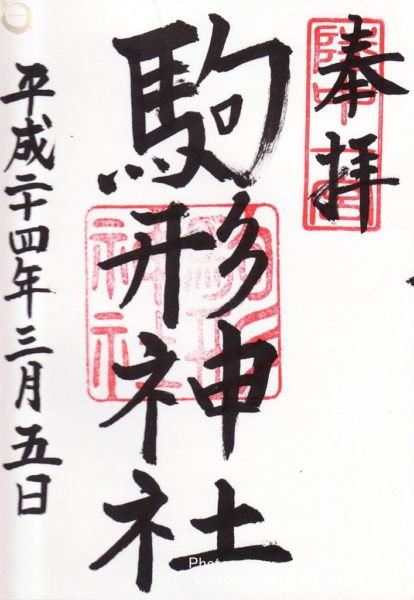
1.ご紹介(Introduction)
The official name of this shrine and how to be called The present address and map I will introduce the history of the god and the shrine enshrined.
【神社名(shrine name)】
駒形神社 本社(komagata shrine)
(こまがたじんじゃ)
[通称名(Common name)]
komagatasan
【鎮座地 (location) 】
1-83 Mizusawa-Nakaueno-cho, Mizusawa Park, Oshu City, Iwate Prefecture
[地 図 (Google Map)]
【御祭神 (God's name to pray)】
Six gods, "Komagata Okami", written on the building sign of Okumiya
《主》天照大御神(amaterasu omikami)
天常立尊(ameno tokotachi no mikoto)
國狭槌尊(kunino sazuchi no mikoto)
吾勝尊(akatsu no mikoto)=天忍穗耳尊
置瀬尊(okise no mikoto)= 瓊瓊杵尊
彦火火出見尊(hiko hohodemi no mikoto)
【御神格 (God's great power)】(ご利益)
・産業開発(社業繁栄)Industrial development
Traffic safety Prayer for Traffic safety
Victory prayer Victory prayer Victory prayer
・合格祈願 Prayer for passing the exam
・方位除け You can rule out bad directions
Home safety Safe and stable home life
・良縁祈願 A desire to deepen connections and intimacy with good people
・厄除け Prayer at an age considered a milestone in life
・心願成就 Realization of wish of heart
【格 式 (Rules of dignity) 】
・『延喜式神名帳(engishiki jimmeicho)』所載社
・ 陸中国一之宮
・ 別表神社
【創 建 (Beginning of history)】
Founding is unknown. Various legends are passed down to the present
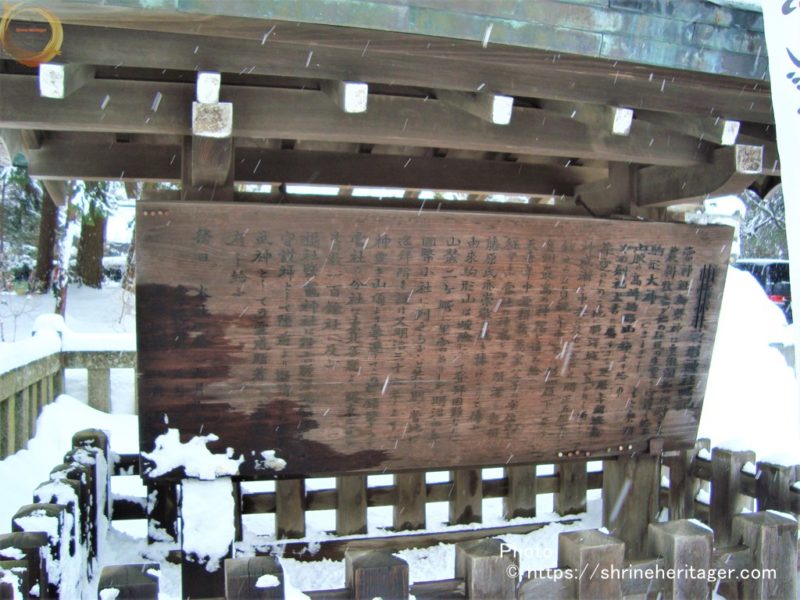
The Kameno(毛野一族) clan emerged in the Kanto region in the ancient times, revered Mt.Akagi, and worshiped the god of Akagi to rule the Ueno Plain, but later became divided into Kaminokuni and Shimogenokuni, and Shimogeno became Nikko Volcano. Established Futarayama Shrine.
It was worshiped against the backdrop of a dormant volcano, and Mt. Komagata is also located on the outer ring of Akagi Volcano, and the word "Mao(『馬王』)" can be seen scatteredly around the Futarayama Shrine(二荒山神社).
Kamikeno and Shimogeno(上毛野・下毛野氏) extend their powers to the north, studying with their homeland everywhere they go, searching for a shapely mountain with a solitary mountain at a dormant volcano, and naming the second highest peak of the mountain range Komagatake or Komagatayama. , Dedicated to Komagata Ogami.
It also reaches Oshu, and you can see a male figure from the Isawa Plain, soliciting Komagata Ogami to the summit and naming it Komagatake.
This is due to 上毛野胆沢公, who was at the time of the Emperor Yuuraku雄略天皇 (around 456).
Of all the Komagata shrines enshrined in Hidemine in Japan like this, only two companies, the "Komagata shrine" in Kurihara-gun, Miyagi prefecture, and our company, are in the Enki-style god list.
The reason why our company advanced the Shinto rank to the fourth rank below was that it was worshiped by the Conqueror General, "Sakaue Tamura Maro(坂上田村麻呂)", who founded the Mutsu country "Isawa Castle." It was due to the above reports from this office many times.
There is a song called Komagata that called Akagi Shrine in the old days, and sang Koma. At that time, Korea was in the Koryo era and was also a country of admiration for culture, so I used the word coma to show off to the world.
The fact that Hakone Shrine of Hakone Mountain Enshrine dedicates Komagata Shrine is similar to the description that it has solicited Koma Daijin from Korea.
In this way, it can be said that the god of Akagi is the god of Komagata.
As Sakaue Tamura Maro and Minamoto no Yoriyotomo and father-in-law worshiped Komagata Okami seriously and learned that they fulfilled their wishes for martial arts, the four generations of Fujiwara who built glory in Oshu were also worshiped."Mt.Tabaine(束稲山)" seen in the east across the Kitakami River from Hiraizumi is also called Mt. Komagata.
This may make it difficult to climb the steep Komagatake mountain often, and it is believed that Komagata Okami was enshrined on this mountain.Hidehira Fujiwara casts a deity with copper on Hakone Engi.
To enshrine the god of Komagata can be imagined how Fujiwara dedicated his respect.Thus, the reverence of Komagata Shrine is magnificent, and the number of branch offices extends from each prefecture in the Tohoku region to the Kanto region, reaching the number of hundreds.
From the official website
【由 緒 (history)】
head shrine Nakaueno-cho, Mizusawa-shi, Iwate
Okumiya Komagatake, Nishine, Kanegasaki-cho, Isawa-gun, Iwate Prefecture
御祭神 (God's name to pray)Komagata Okami
文徳天皇仁寿元年正五位
清和天皇貞観4年従四位下(奥州最高の神階也)
Arranged with a small shrine under the control of (engishiki jimmeicho)
About Okumiya
In the old days, Okumiya was sitting on top of "Dainichidake".
"Dainichidake" is a sacred mountain that rises to the south of "Komagatake" where the "Okunomiya" is currently enshrined, and there is a Shinto monument actually named Komagata Daimyojin.
"Komagatake" and "Dainichidake" together with "Ushigatayama" and other mountains form the outer ring of the former volcanic volcano, and "Komagatayama" is a collective term for these mountain ranges. The reason why the mountain was settled on "Dainichidake" is because it was the highest mountain in the mountain range.The modern Okumiya was built on the summit of "Komagatake" at the present location. The building area is 3 tsubo, 3 minutes and 5 minutes, and it is headed to Tohoku with a jewel.
This place, Sanyo, is the former territory of Date, in Isawa County, and San'in is the former territory of Nanbu, in Waga-gun. It was settled on the border of both territories and, in addition, the reverence of both was extremely high, so it is a Shinto shrine. The example was that each public fund was remodeled every 20 years.本社について
Our company's site was originally Shiogama Shrine's land, but when it was lined up at the national shrine on May 14, 1868, both the Satomiya and Okumiya were in an area with inconvenient transportation, so the prefectural governor, etc. Since it was not possible to visit, the current shrine, which was the location of the Mizusawa prefectural government at that time, was designated as a temporary worship place.
In addition, in 7th year of Meiji, the shrine was greatly repaired and made into an official place of worship.
Furthermore, in 1868, the spirit of God was transferred from the summit,
Shiogama Shrine was enshrined in Kasuga Shrine, which is the company's Beppu, and was transferred to the shrine's Issai Komagata Shrine.
The main hall and the worship hall were originally built by Sosori Mizusawa, the chief lord of the castle, in 6th year of Kan'ei, but suffered a fire in 6th year of Ansei and burned down. It was revived in Bunkyu 3rd year.
Among them, the main shrine is a giant tree of Keyaki, which was carved by the carpenter Mankichi Kumagai of Nishigawai-gun, Kinugawa-mura, and is all made by Sangensha.
In addition, the current shrine became a shrine suitable for Rikuchu Ichinomiya both in name and reality, with a total construction cost of 62600 yen (Ministry of Interior subsidy 32600 yen) to commemorate the 30th anniversary of the transition to the current shrine. It is a thing.里宮について
Satomiya was settled at Hinakozawa, Nishineji, Kanegasaki-machi, which reached about 12 km at the foot of "Komagatake", and was positioned as a pre-war prefectural shrine, but now it is an independent festival according to the new law.
According to the Ou Kanso Kenzoku magazine, it is difficult to climb and worship the Holy Spirit because the enclave of Okumiya is a sacred mountain in the world, and the mountains are steep. Furthermore, from "Ugai Shimizu" on the hillside, women were forbidden ahead. It is said that the Holy Spirit was moved from the top of the mountain and served in harmony so that villagers and young women could worship.
There is also a Satomiya in "Iwasaki" of the former Nanbu territory, but now the relationship with our company has disappeared."National Shrine Festival Comprehensive Survey (1995)" [Shrine Head Office]
【境内社 (Other deities within the precincts)】
・山神社(yama no kamisha)
《主》大山衹神(oyamatsumi no kami)
木花開耶姫神(konohanasakuya hime no kami)
Yama shrine
"Konohana Sakuya Hime no kami" is the god of giving birth to a healthy baby.
Of the small pillows on either side of the shrine, those who want a boy should take white, and those who want a girl should take red, and they should be enshrined in the shrine of the family to pray for a safe delivery.
When a child is born safely, it is customary to return it with two red and white pillows.
Oyama zumi no kami is a mountain god. It is widely worshiped as a guardian deity of forestry, wood and its processing, and construction.
Festival Day April 12th
Festival Day October 12th
From the information board
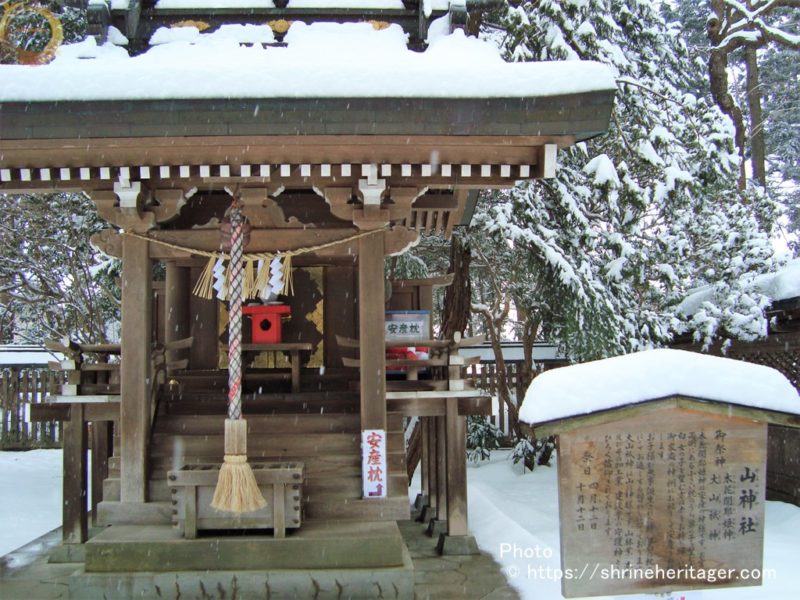
・別宮 鹽竃神社(shiogama jinja)
《主》鹽土老翁神(shiotsuchi no oji no kami)
武甕槌神(takemikatsuchi no kami)
経津主神(futsunushi no kami)
《合》天児屋根神(ameno koyane no kami)
比賣神(hime no kami)
藤原鎌足朝臣(fujiwarakamatari no ason)
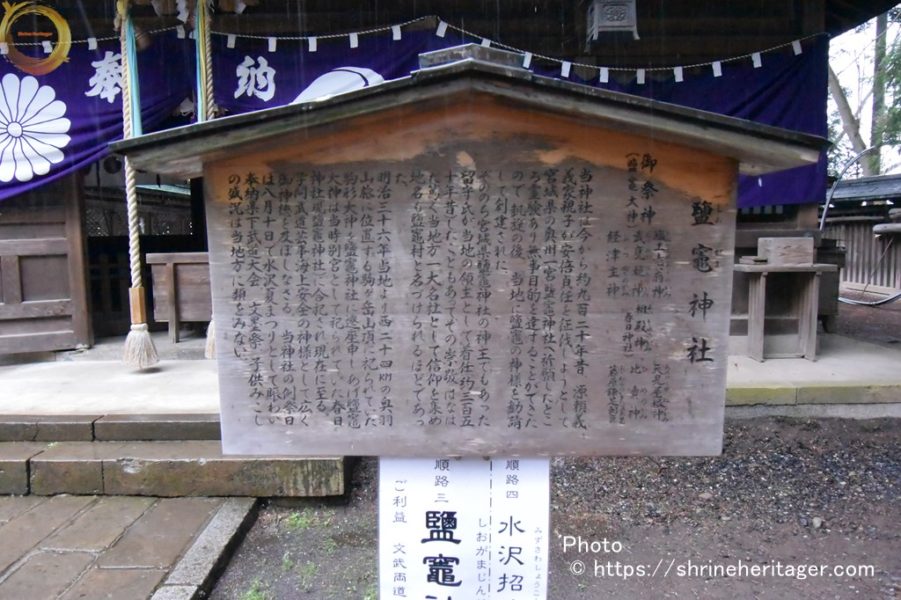
鹽竃神社
Go reign of Emperor Go Reisen (1052), Minamoto no Yoriie and father-in-law tried to conquer Abe Sadao and prayed for it at Shiogama Shrine in Shiogama City, Miyagi Prefecture. Daimyojin) was entrusted to the Shinto God.
Since then, it has been called Shiogama Village and was named until the enforcement of the Mizusawa City System (1948).
In the 16th year of Kan'ei (1629), Mr. Sotoru Rumori, the first owner of Mizusawa Castle, repaired the company. In 1763, the seventh lord of the castle, Mr. Yoshimori Torumura, moved to the present location from the land of Ishida and Daimyojin and maintained the precincts, worshiped as the guardian deity of the territory, set up a belief and a shrine house It became one of the most famous shrines in this region and gathered faith.
Due to the great fire in the 6th year of Ansei (1859), the whole town was scorched and the shrine also burned down, so the 11th castle master Kunimune Rusume revived. In particular, the main shrine had a diameter of 7. It was finished with one big tree of keyaki of 8 meters. It still exists as the main hall of Komagata Shrine.
In 1903, from the summit of Mt. Komagatake, the Holy Spirit was transferred to Shiogama Shrine, which became Komagata Shrine.Excerpt from the pamphlet
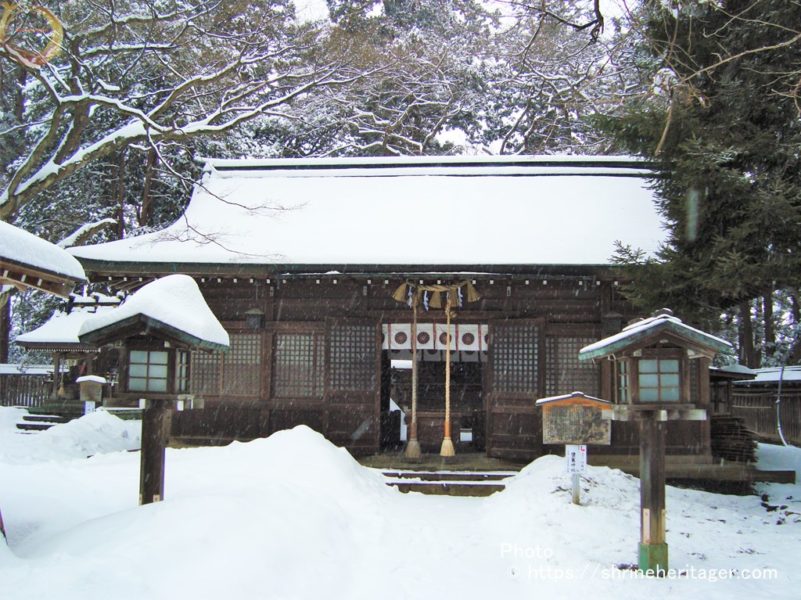
・水沢招魂社(mizusawa shokonsha)
《主》郷土出身の護国の英霊
This shrine has been enshrined in the spirit of a native nation who dedicated his precious life as a flower of a nation to protect his precious life in the face of numerous national difficulties from the Meiji Restoration (Boshin War) to the Great East Asian War.
別名郷土の靖国神社ともいいます。
祭日 六月二日
案内板より
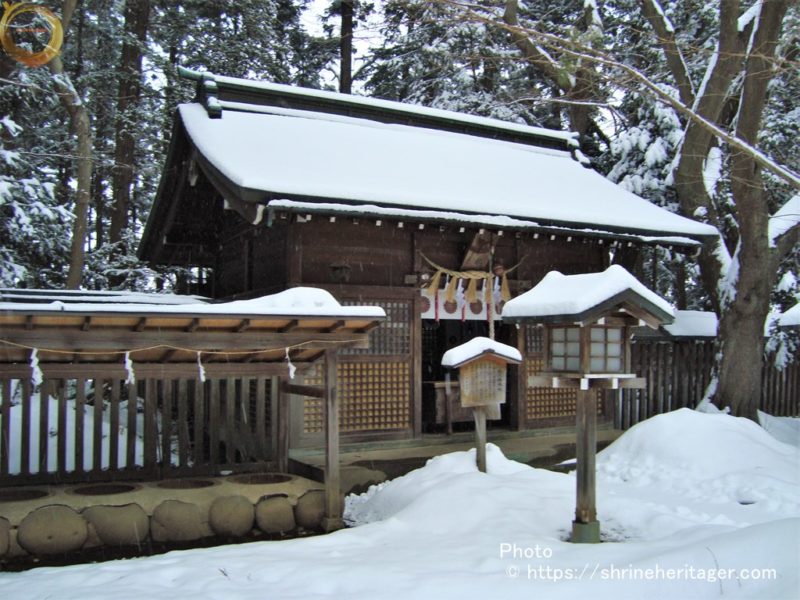
スポンサーリンク
この神社の予備知識(Preliminary knowledge of this shrine)
This shrine has a long history.
『延喜式神名帳(engishiki jimmeicho)』The two volumes that are regarded as important among all 50 ritual- style scrolls created by the Imperial Court during the middle Heian period are called " engishiki jimmeicho " (edited in December 927). Approximately 1100 years ago, the name of "2861 company" and the number of gods enshrined there are listed in the list of government offices (shikinaisha) nationwide.
【延喜式神名帳】(engishiki jimmeicho)The shrine record was completed in December 927 AD.
[旧 行政区分](Old administrative district)
(God's seating number) Higashiyamado 382 seats... Large 42 (including monthly Shinjo 5) and small 340
[旧 国 名 ](old county name)
(神様の鎮座数)陸奥国 100座(大15座・小85座)
[旧 郡 名 ](old region name)
(神様の鎮座数)胆沢郡 7座(並小)
[名神大 大 小] 式内小社
[旧 神社名 ] 駒形神社
[ふ り が な ](こまかたの かみのやしろ)
[How to read] (komakatano kamino yashiro)
https://www.digital.archives.go.jp/DAS/meta/listPhoto?LANG=default&BID=F1000000000000004146&ID=M2014101719562090086&TYPE=&NO= Image Use
National Diet Library Digital Collection Enki-shiki Publication (Baba) [Former Kurashi] Autumn Leaves Yama Bunko
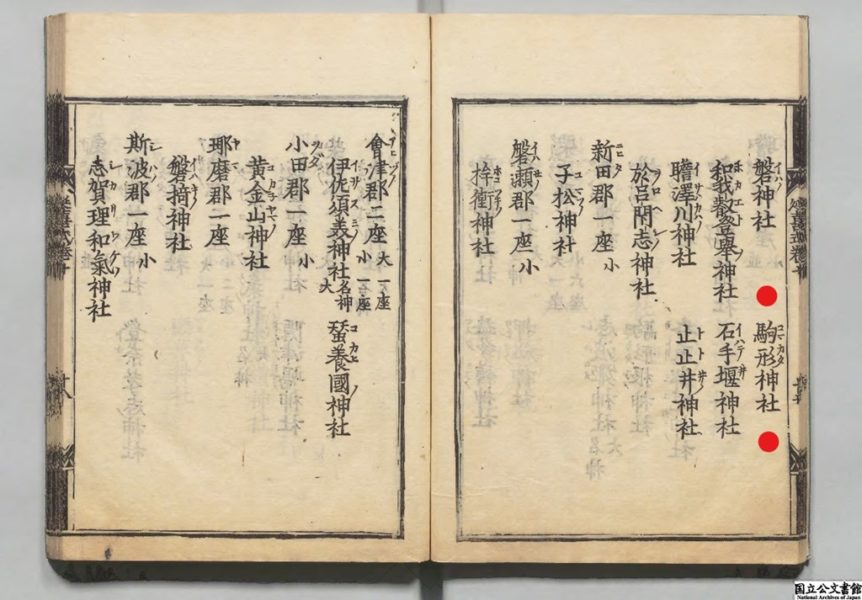
【オタッキーポイント】(Points selected by Japanese Otaku)
あなたが この神社に興味が湧くような予備知識をオタク視点でご紹介します
Komagata shrine is about the composition of "Okumiya", "Two Villages" and "Headquarters"
Komagata shrine originally originated in the dedication of "Komagata Ogami" to the summit of "Komagatake" in Kanegasaki. Because both "Okumiya" and "Satomiya" were in a location where transportation was inconvenient, the present location of "Shiogama Shrine", which was located in the town of Mizusawa, was used as a place of worship.
Details of the details
About "Okumiya"
Originally, there was Okumiya at the summit of "Dainichidake" in the south of "Komagatake".
Since early modern times, we will move to the summit of "Komagatake".
In the Edo period, there was "Komagatake" at the boundary of the "Sendai clan" and "Morioka clan", so it is said that every 20 years, both clans replaced and rebuilt the shrine.
About "Two Village Shrines"
"Komagatake" is difficult to visit at the Okumiya at the summit. Before "Ugai Shimizu" on the hillside, there was a sacred mountain where women were prohibited. The Sendai clan and the Morioka clan each built a Satomiya at the foot of Komagatake by soliciting the spirits of the summit.
・仙台藩側の金ヶ崎の里宮
・盛岡藩側の岩崎の里宮
Two village shrines are settled
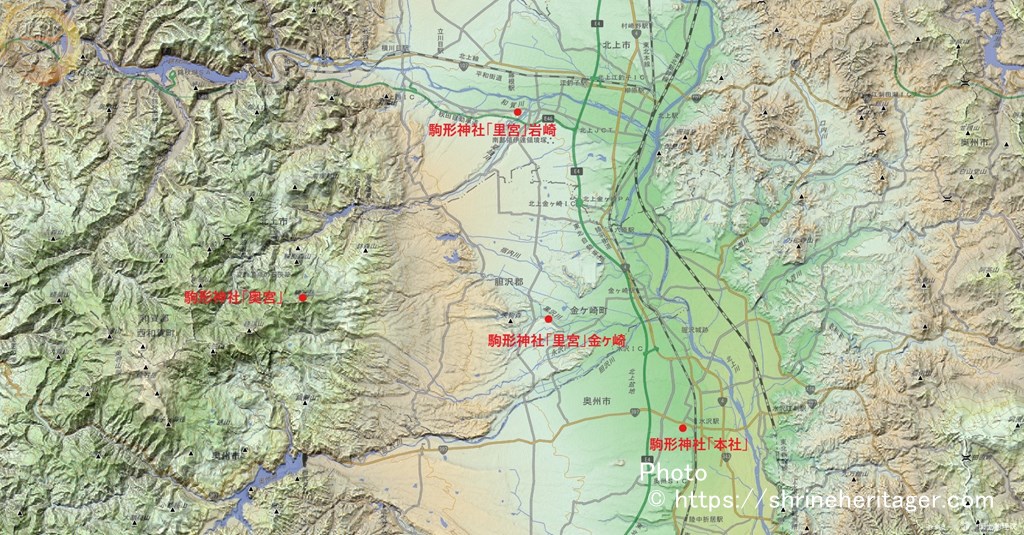
Please see the article of Komagata Shrine Satomiya
About "Headquarters"
The origin of national Shinto in the Meiji era「National shrineThe main hall of the Shiogama Shrine near Mizusawa Prefectural Government at that time was designated as a temporary hall of worship.
It became an official place of worship at Komagata Shrine in 1874.
In 1903, the spirit of the summit of the mountaintop was solicited to the place of worship and became the headquarters of Komagata Shrine.
All of the original Shiogama Shrine has been transferred to Komagata Shrine, and all of the shrines have been incorporated into the Kasuga Shrine of the precincts of the precincts of the temple grounds.
About the origin of the name of Komagata
According to a company biography, around the 4th century, the "Keno" clan emerged in the Kanto region in the Kanto region, worshiping Akagiyama, and worshiping the god of Akagi to rule the Ueno plains. Divided into "Jomo no kuni" and "Shimoge no kuni", Shimogeno founded Futarasan Shrine at Nikko Volcano.
This belief was worshiped against the background of a dormant volcano, and there is Mt.
It is said that the “Keno clan”, who gradually expanded their power in the Tohoku area, chose a “quiet volcano” with a good shape and called “Komagatake” to enshrine Komagata Okami.
When we arrived at this place, we saw the appearance of "Isawa" plains, and solicited "Komagata Okami" on the summit, and named it "Komagatake".
This is due to 上毛野胆沢公, who was at the time of the Emperor Yuuraku雄略天皇 (around 456).
Sakaue Tamura Maro applies for promotion of the deity of Komagata Shrine, which was said to have been the "guardian deity of Emi" after the conquest.
After that, it was told that the shrine was erected on the present summit of Komagatake (850), and it was collectively called "Komagatayama" along with "Komagatake", "Ushigatayama", and "Washigamoriyama". An ancient monument of "Komagata Daimyojin" is still on the summit of "Dainichidake" (now Kyozukayama)
Komagata Shrine Spring Festival "Children's Horse Warrior Procession"
Children aged 5 to 10 wear armor helmets, ride bravely on horseback, and walk through the city.
In the old days, "Yorii Minamoto" and "Yoshiya" parents and children set up an arrowhead in the middle of "Komagatake" (mountain of Mt. Komagata Shrine) to pray for the peace of the region
It is an event dedicated to the shrine in hope of healthy growth of children
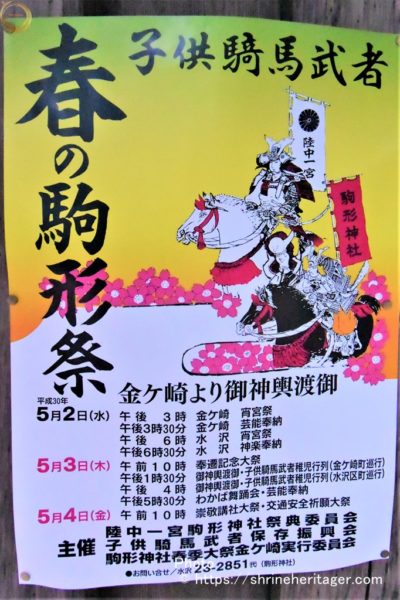
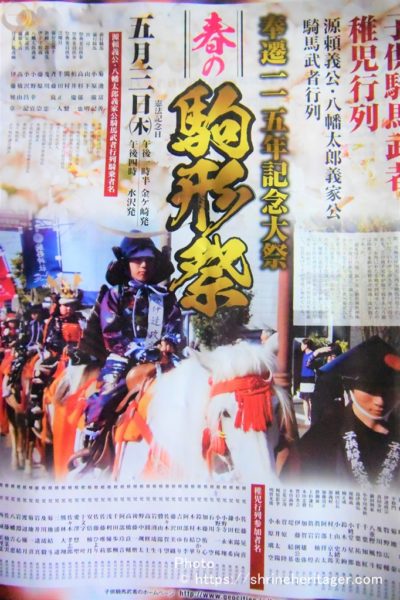
スポンサーリンク
Visit the Shrine (Pray at the Shrine)
We will post pictures of both normal and snow scenes when visiting this shrine.
15 minutes walk from JR Mizusawa Station From the entrance to Mizusawa Park
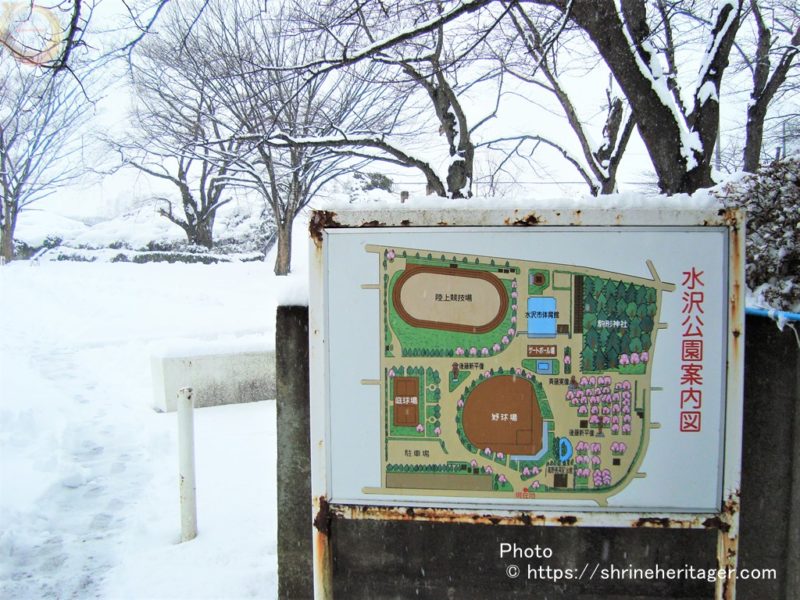
Go through the snow into the precincts
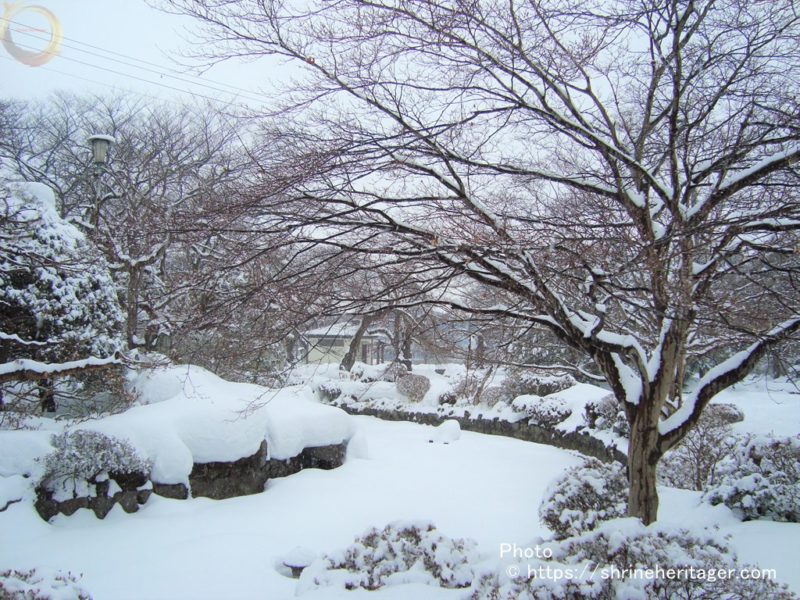
Arrived at Komagata shrine
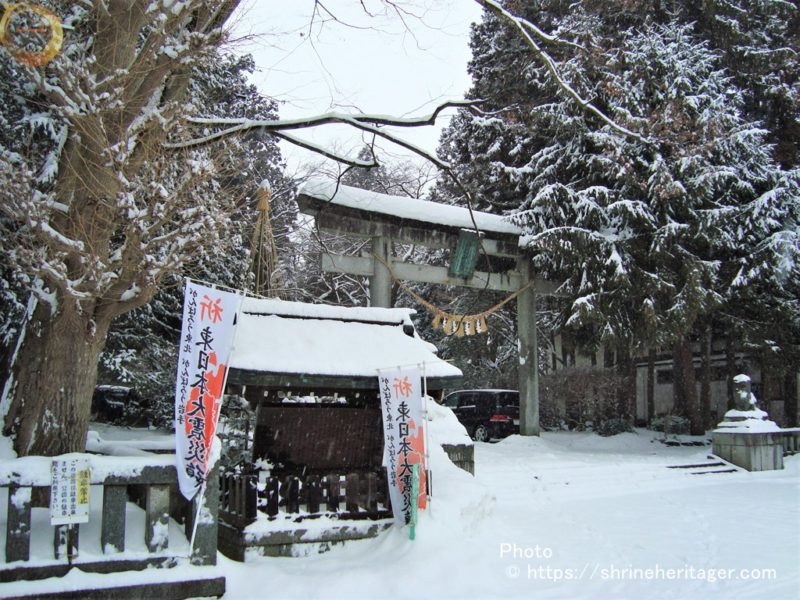
It is in front of Torii
Snow-covered stone lantern A guardian dog is sitting
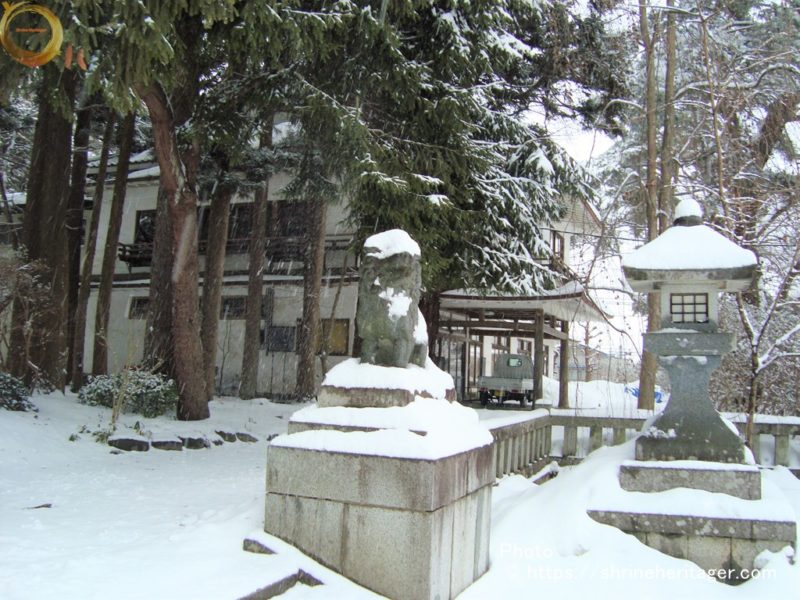
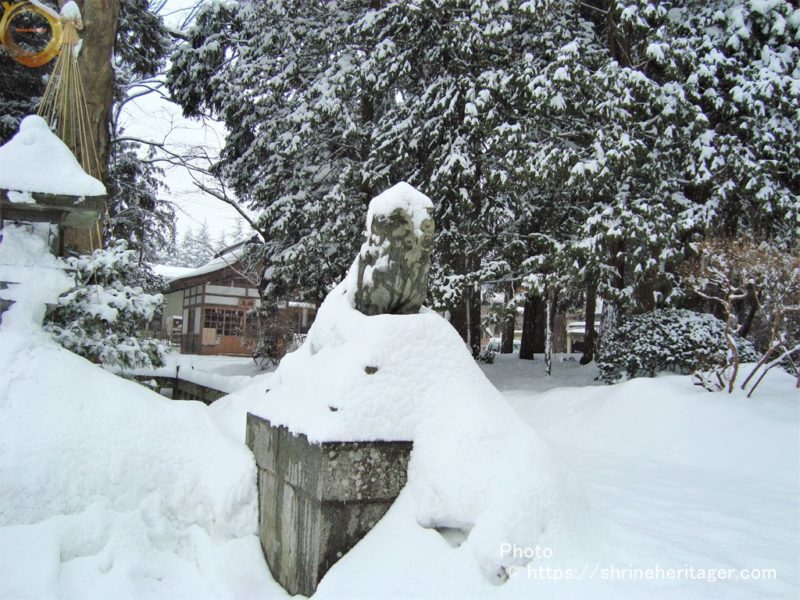
In May, it's in front of the Torii gate where azaleas are in bloom It's the same place
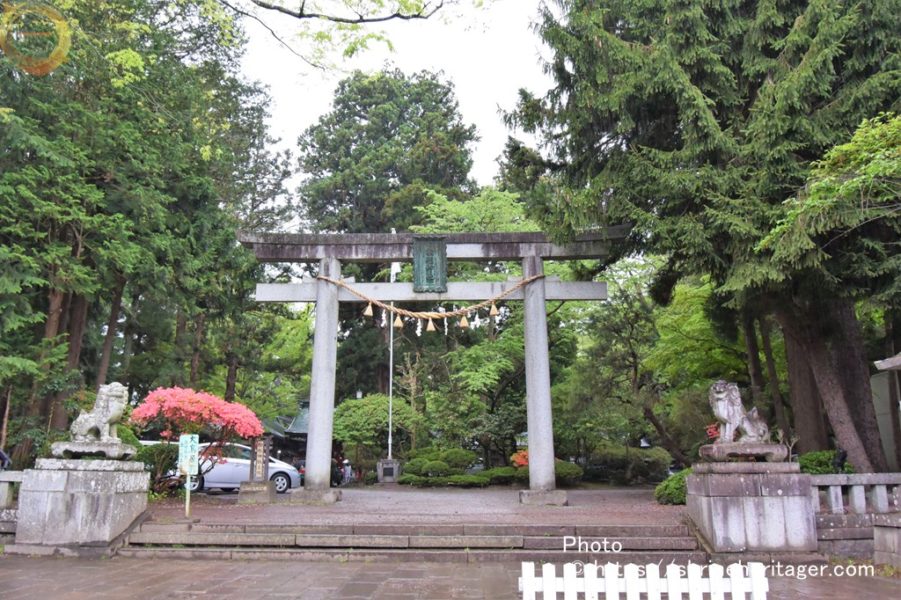
The torii is lined with pouring ropes, and the flat surface says "Komagata Shrine"
Bow and go through
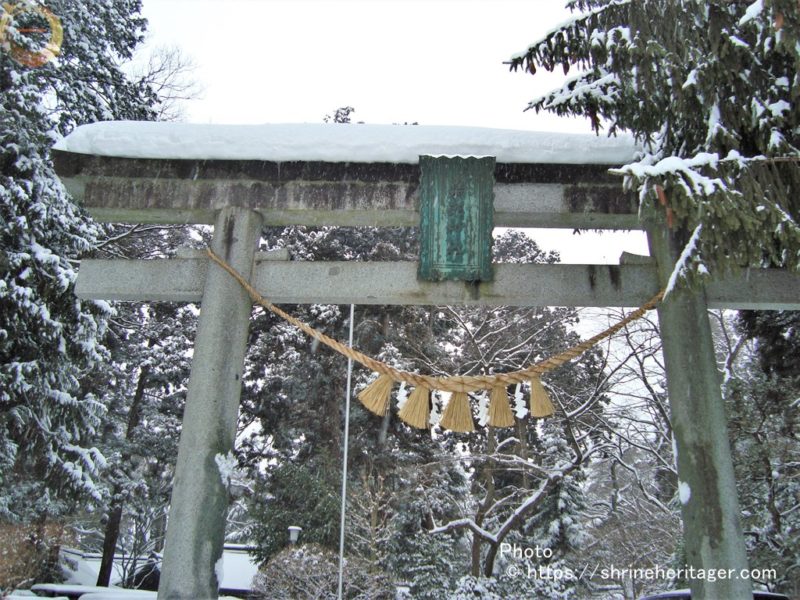
The approach leads straight to the Shinmon worship hall
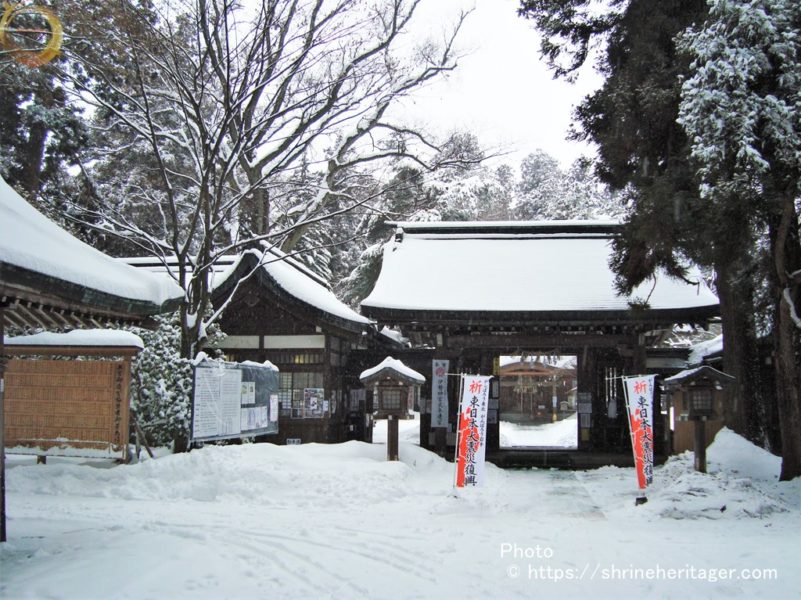
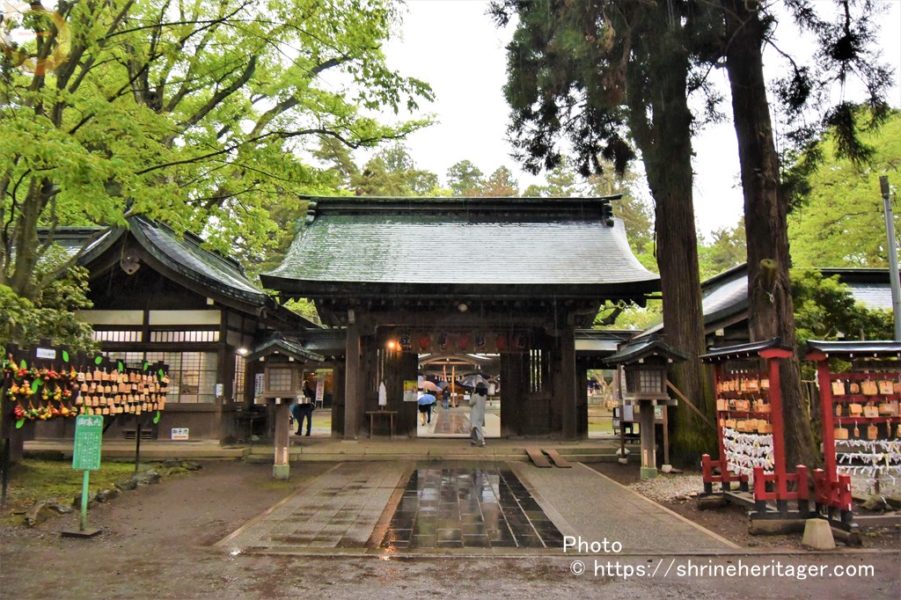
There is a "Temizuya" on the left side before the Shinmon Gate and cleanse it.
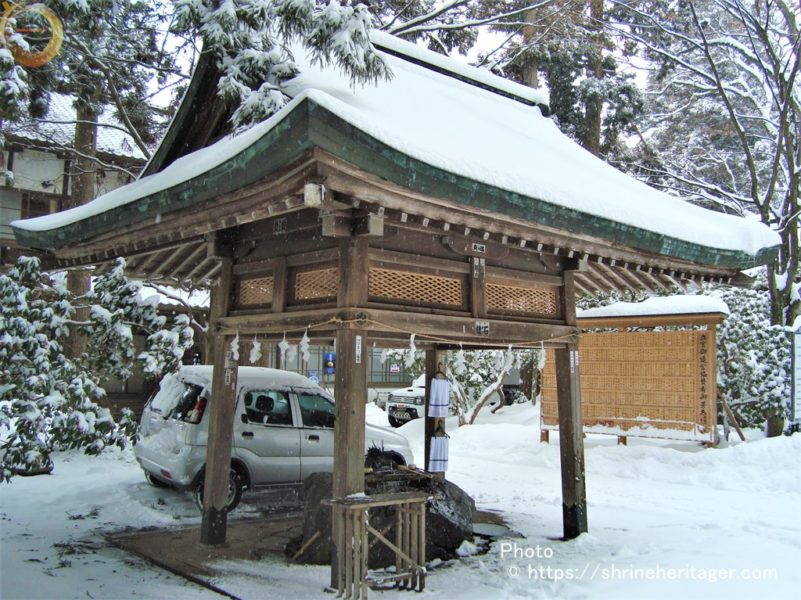
A lantern marked "Komagata Shrine" on the shrine
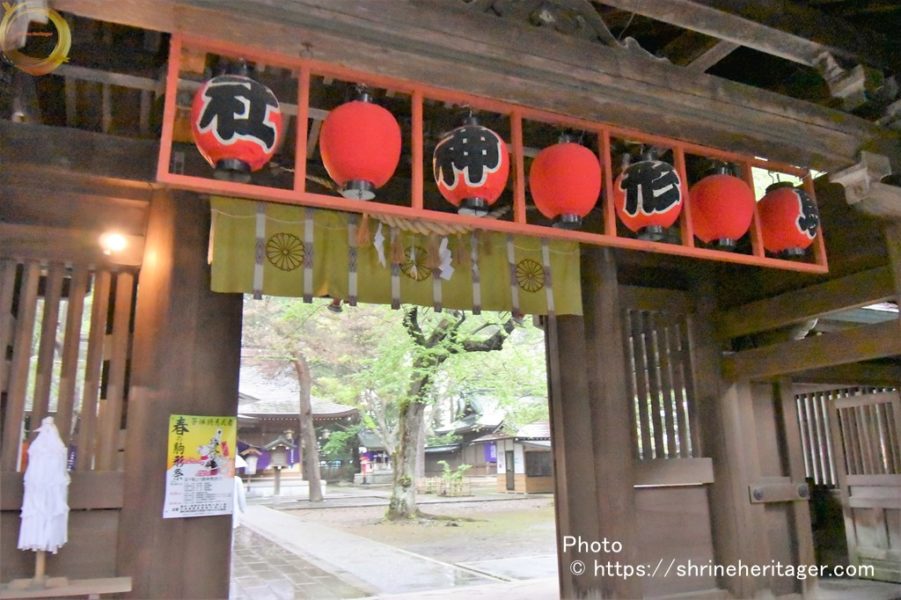
The precincts are wide and spacious The stone pavement path continues straight so that you can distinguish the middle of the line, but for some reason everyone keeps walking along the middle of the line.
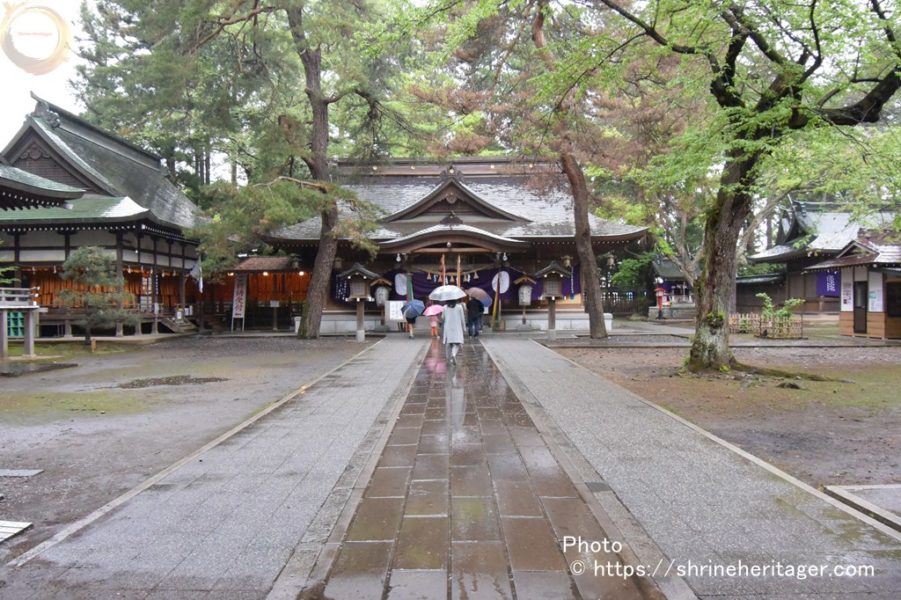
The precincts are another world when it comes to snow scenes
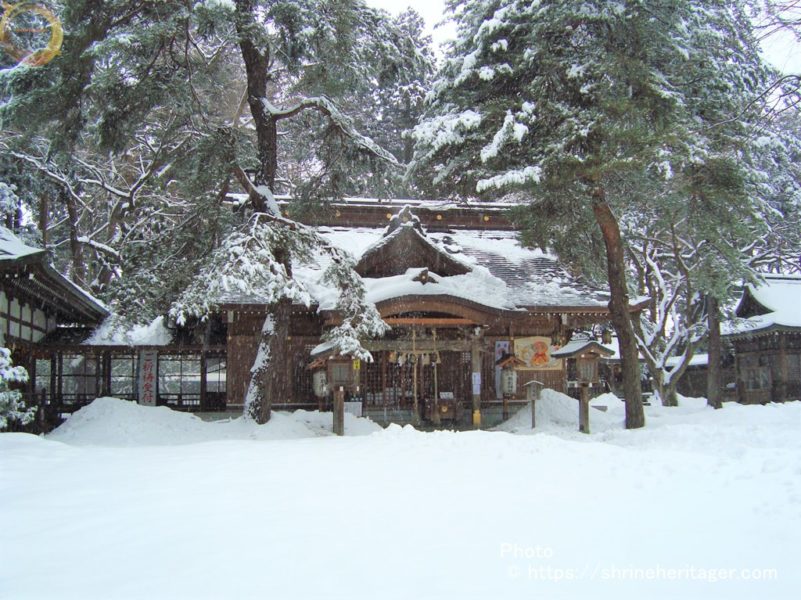
In front of the front shrine, two trees stand on the left and right, and sometimes it is snowing and I feel the atmosphere
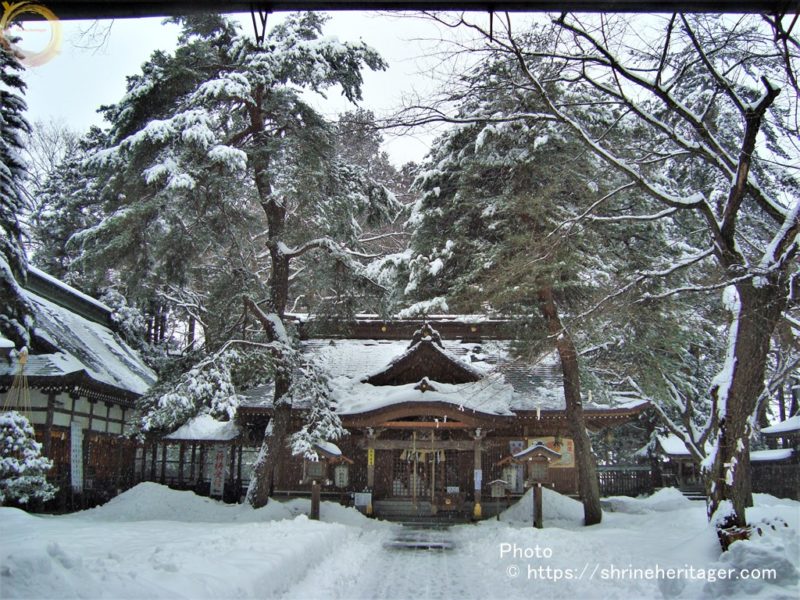
May is like a completely different shrine
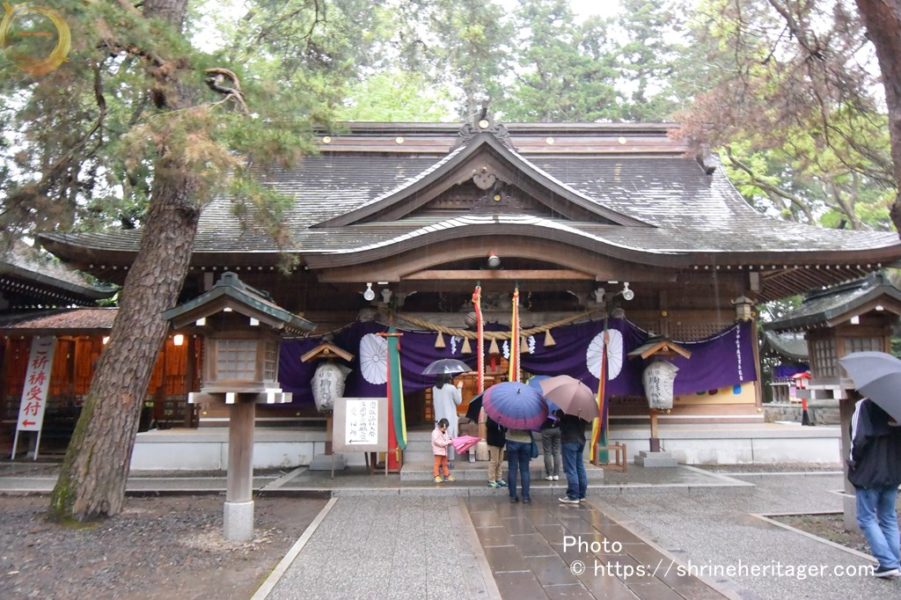
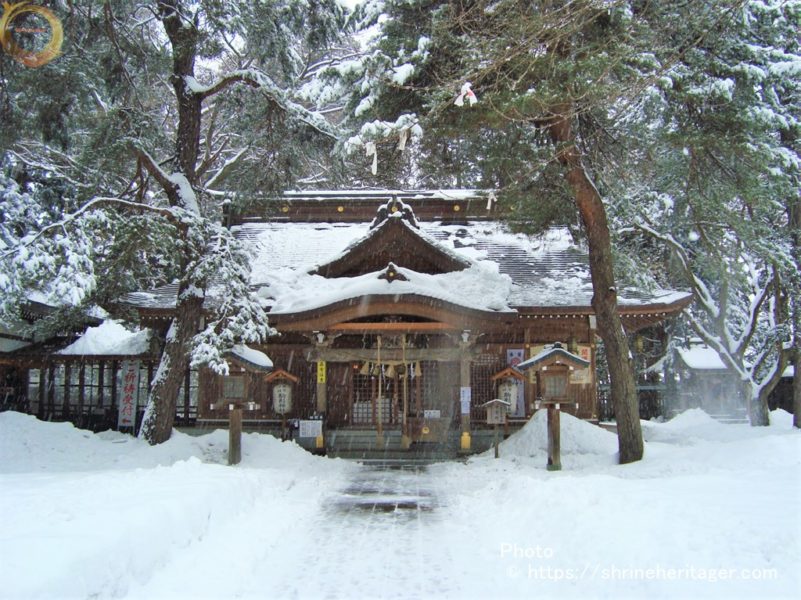
I would like to go to the hall of worship. On the flat, there is "Komagata Shrine, Shohei Goto Shinpei 3rd place, Shinpei Goto「駒形神社 正三位勲一等男爵後藤新平」".
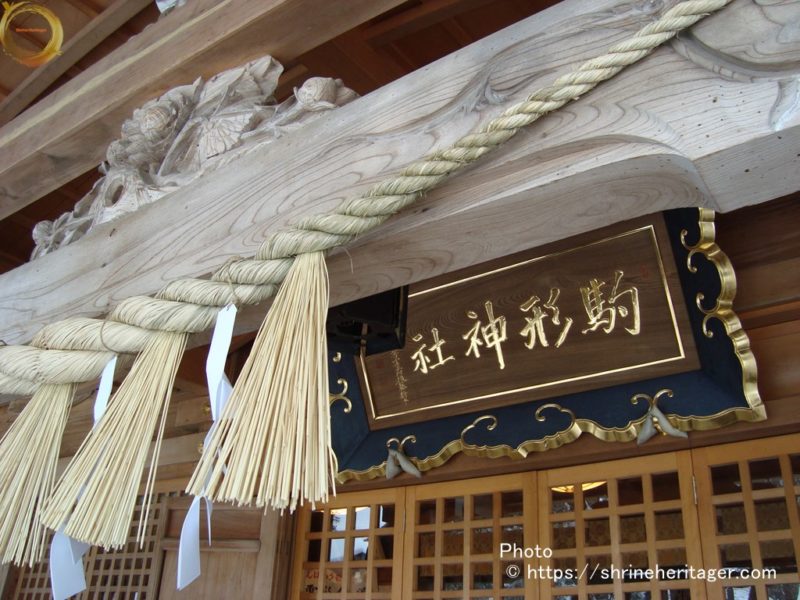
The lantern is "National Komagata Shrine" and the basis for building the headquarters is written down.
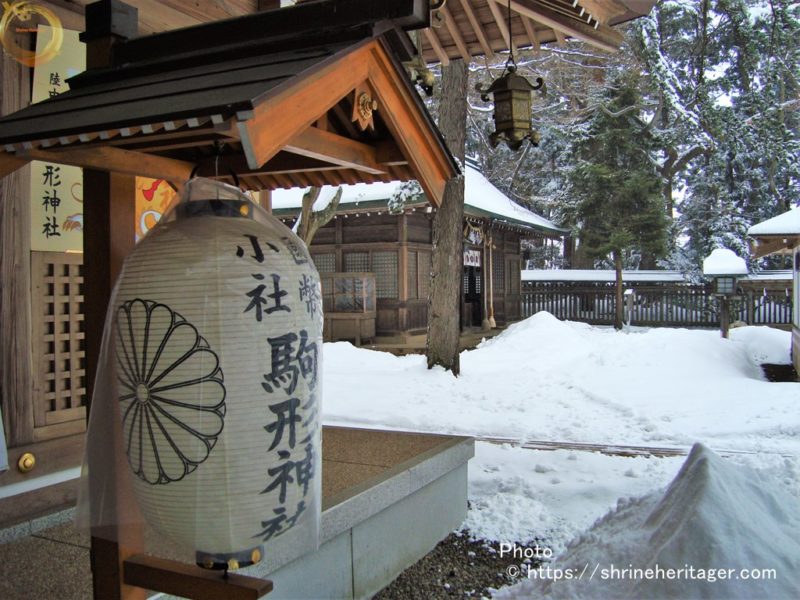
Give me a prayer.
When you reach the god of worship, where you worship God's power, pray with your hands together.
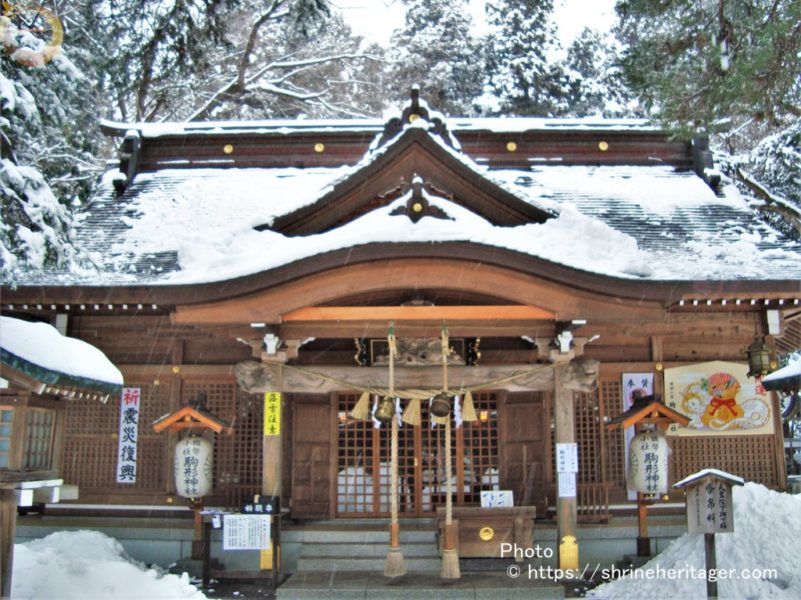
Look up to the main shrine from the side of the worship hall
Icicles dripping from the roof of the temple
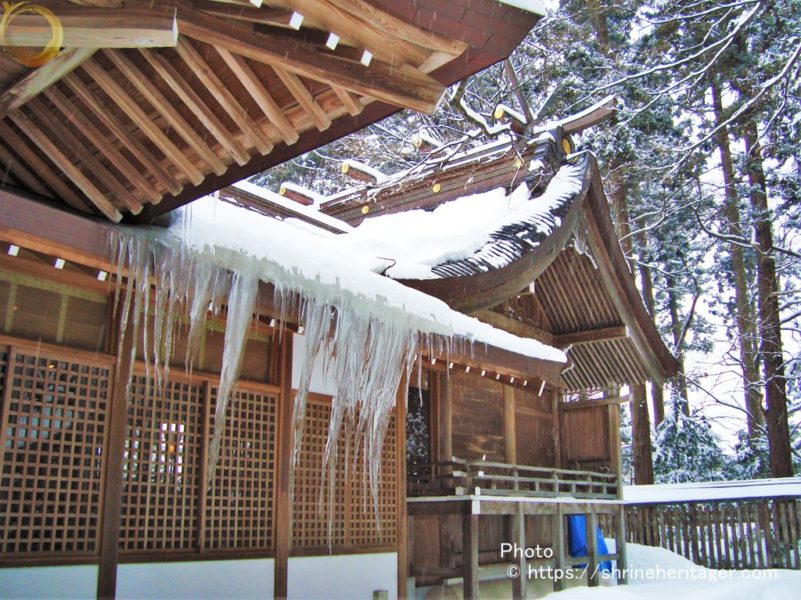
In May, young leaves are thick and comfortable
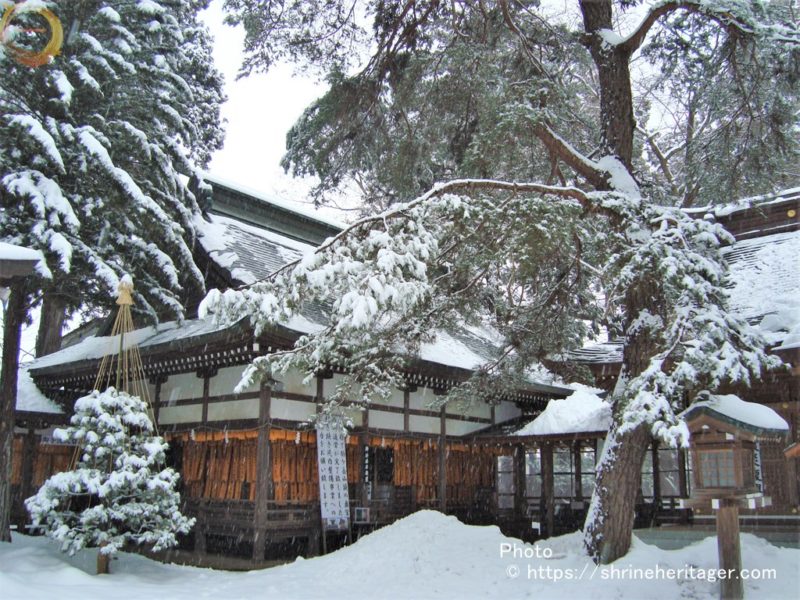
A shrine in the precincts sits next to it. I pray
・山神社(yama no kamisha)
《主》大山衹神(oyamatsumi no kami)
木花開耶姫神(konohanasakuya hime no kami)
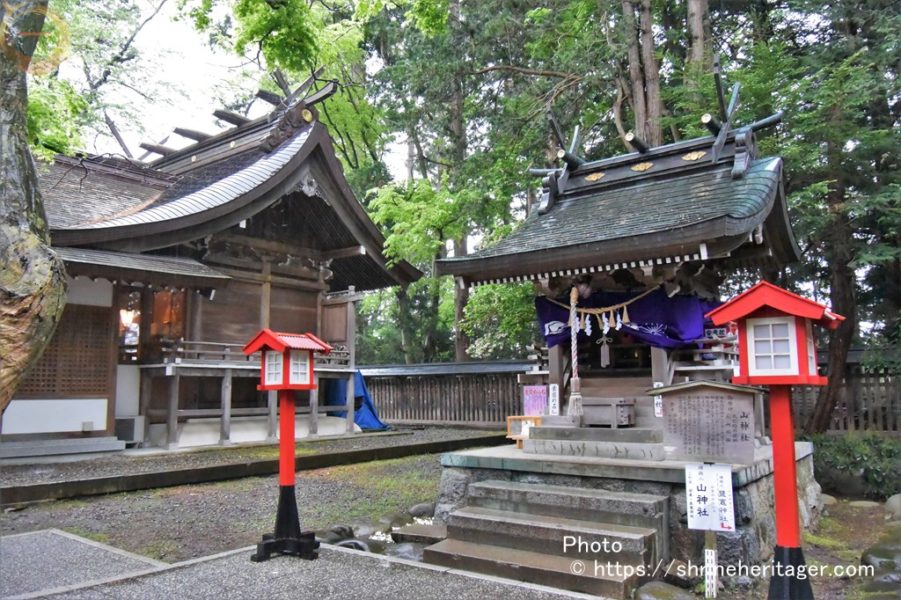
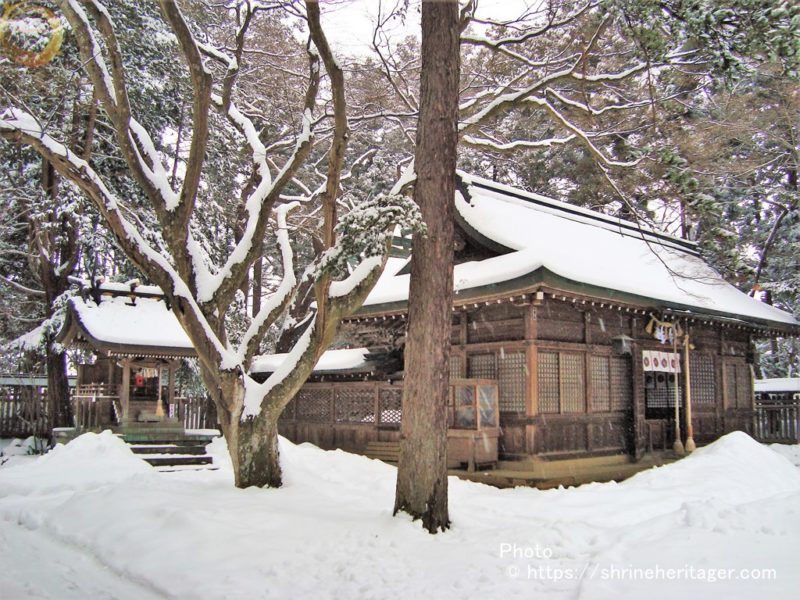
・別宮 鹽竃神社(shiogama jinja)
《主》鹽土老翁神(shiotsuchi no oji no kami)
武甕槌神(takemikatsuchi no kami)
経津主神(futsunushi no kami)
《合》天児屋根神(ameno koyane no kami)
比賣神(hime no kami)
藤原鎌足朝臣(fujiwarakamatari no ason)
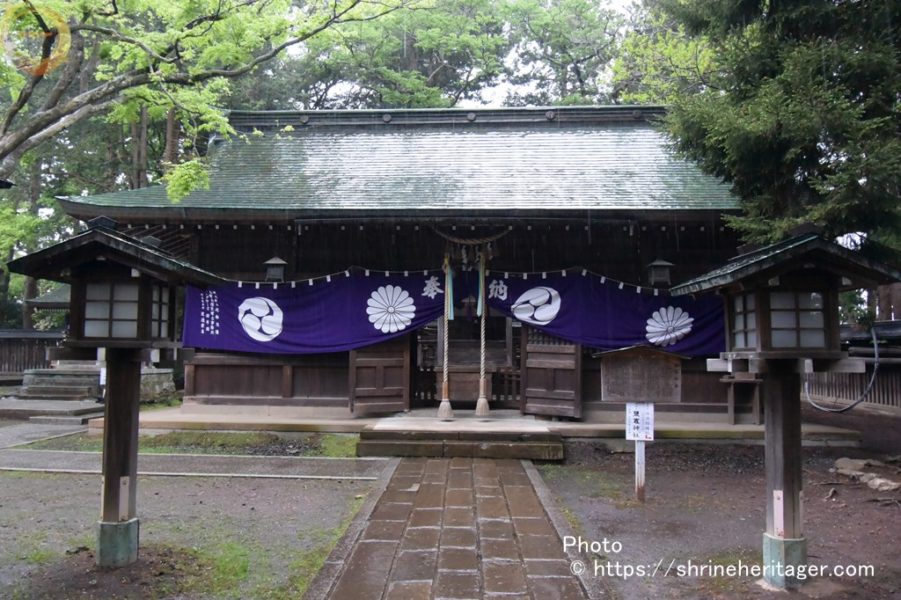
・水沢招魂社(mizusawa shokonsha)
《主》郷土出身の護国の英霊
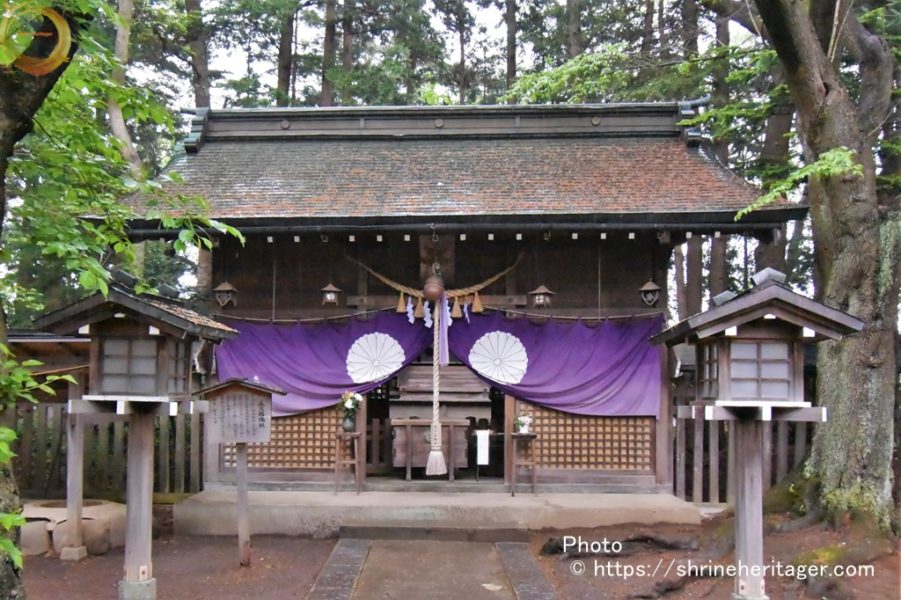
The shrine office is located next to the southwest Shinmon gate in the precincts, and is the award office for red stamps and guards.
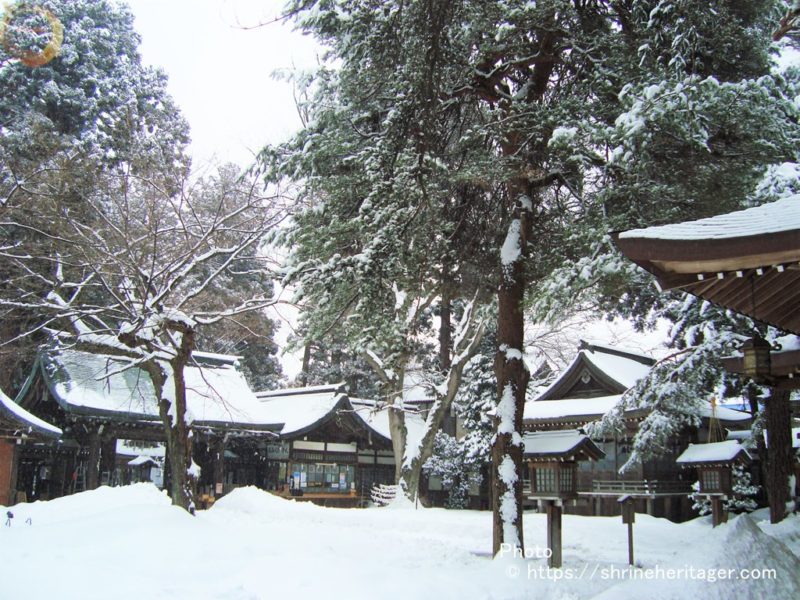
Worship and leave the precinct
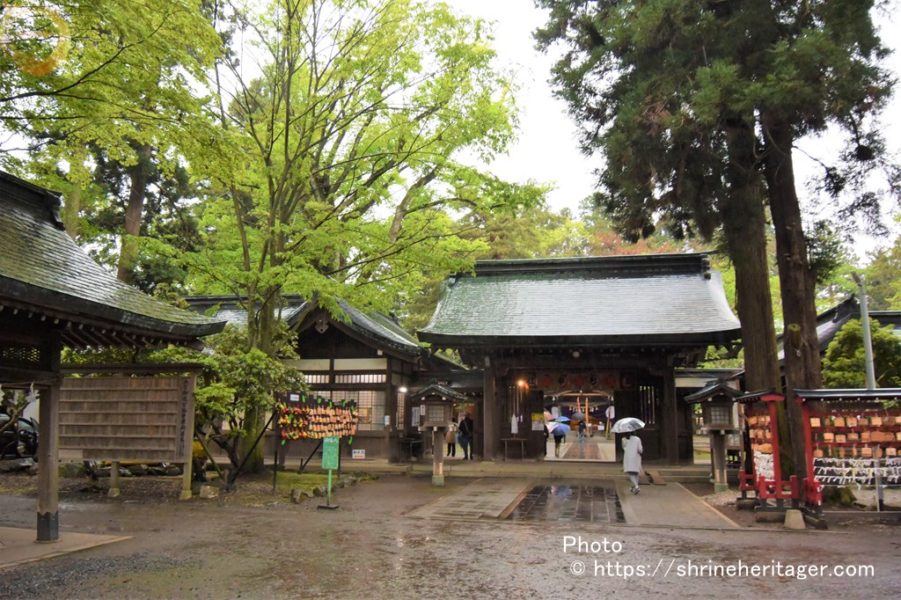
Go through the torii and look back
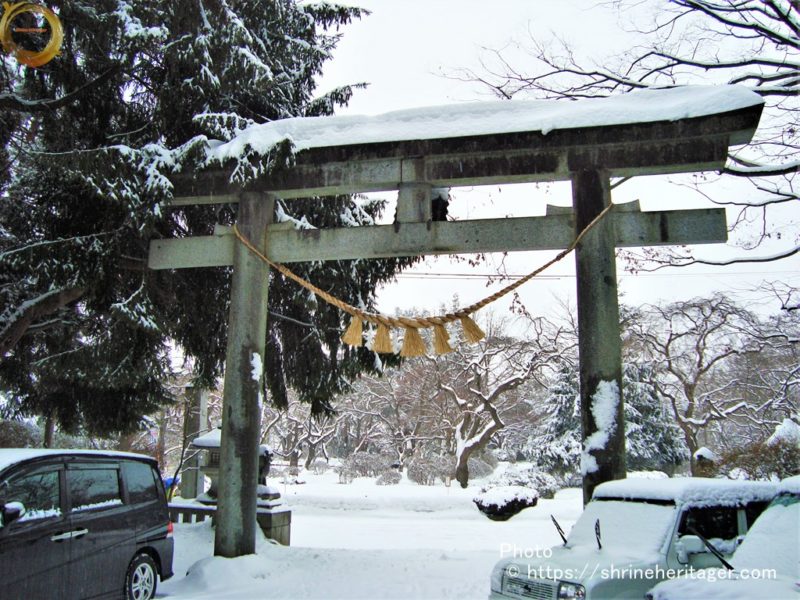
スポンサーリンク
神社の伝承(Old tales handed down to shrines)
I introduce the thing related to this shrine and the literature described.
Tradition recorded in『日本文徳天皇実録(nihon montokutenno jitsuroku)』
『日本文徳天皇実録』(元慶3年(879年)完成)は 六国史の第五にあたり
平安時代に編纂された歴史書【文徳天皇の御代】[嘉祥3年(850)~天安2年(858)]の8年間を記録した文徳実録ともいい 編年体・漢文・全10巻
意訳
「 仁寿元年(851)9月2日 陸奥国の「駒形神」正五位下に神階を進む」
【原文参照】国立公文書館デジタルアーカイブス
『日本文徳天皇実録』元慶3年(879年)完成 選者:藤原基経/校訂者:松下見林 刊本刊本 ,寛政08年 10冊[旧蔵者]農商務省
https://www.digital.archives.go.jp/DAS/meta/listPhoto?LANG=default&BID=F1000000000000047714&ID=M2018040912122716848&TYPE=&NO=
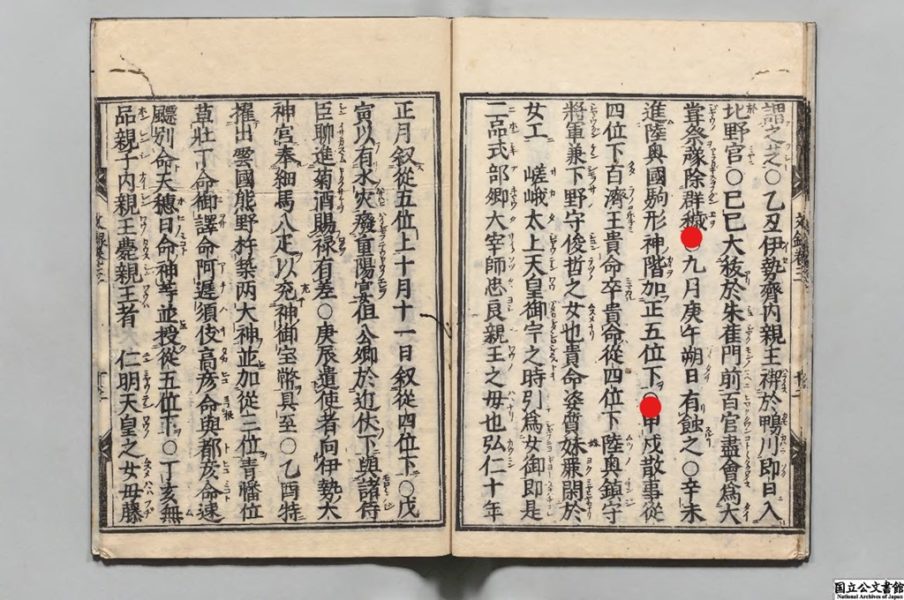
Tradition written in "Nihon sandai jitsoku"
平安時代に編纂された歴史書 六国史の第六
意訳
「貞観4年(862)6月18日 陸奥国 正五位下「駒形神」従四位下を授かる」
【原文参照】国立公文書館デジタルアーカイブス
『日本三代実録』延喜元年(901年)成立 選者:藤原時平/校訂者:松下見林 刊本(跋刊)寛文13年 20冊[旧蔵者]紅葉山文庫
https://www.digital.archives.go.jp/DAS/meta/listPhoto?LANG=default&BID=F1000000000000047721&ID=M2014093020345388640&TYPE=&NO=

It is said to be "Riku Chugoku Ichinomiya," and "Okumiya" is settled on the summit of Komagatake Mountain. In ancient times, it was thought that the whole area was a production area for war horses.
"Hai (hai)" at the Komagata shrine (90 degree bow)


